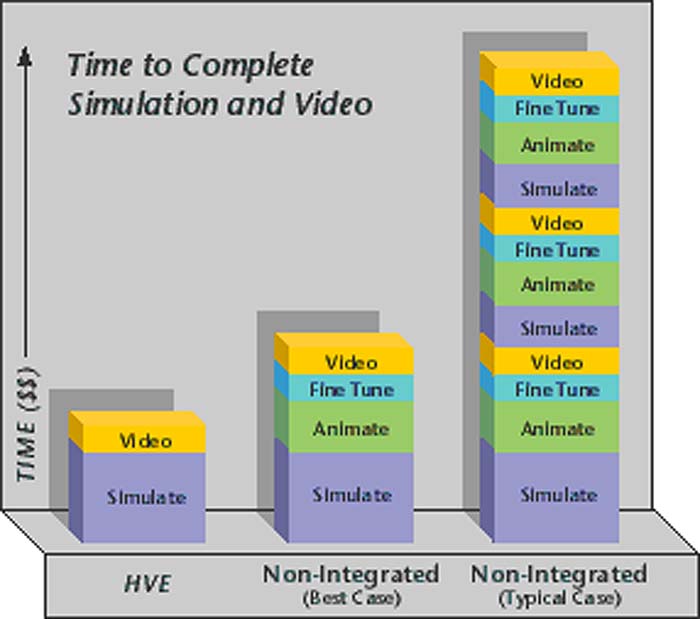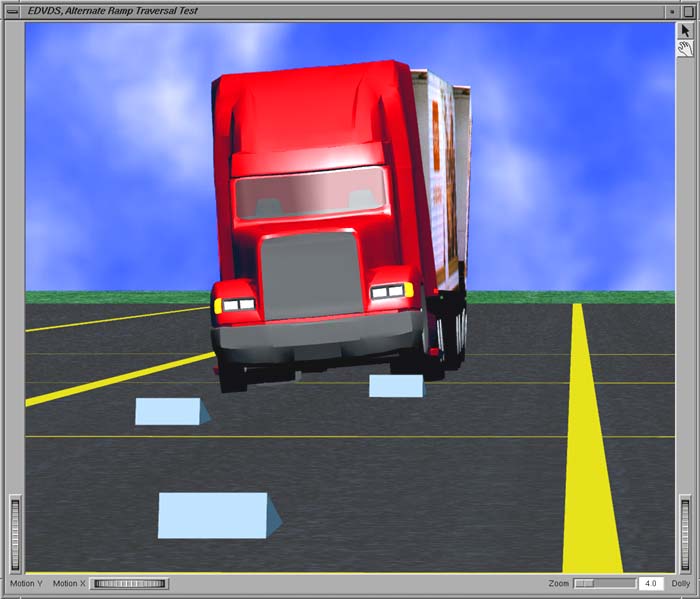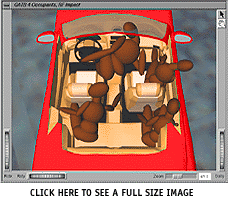![]()
A series of editors within HVE allow you to move freely between model set-up (human, vehicle and environment), event management and results. Additionally, HVE offers an extensive feature set available in several HVE-compatible simulation programs. These features allow for advanced simulation of vehicle control systems, driver reactions, tire or brake system failures and 3-D collision modeling. Each HVE-compatible physics program (e.g. SIMON, GATB) is an independent program running inside the HVE simulation environment.
Using HVE, you can . . .
- Simulate vehicle rollovers including exterior damage.
- Simulate the response of multiple occupants during a rollover collision including contact between the occupants.
- Simulate a crash sequence, change the initial conditions to study avoidability and route both results directly to video showing multiple views including the driver of each vehicle.
- Use virtual thermocouples to monitor brake lining temperatures on a downhill grade.
- Use virtual accelerometers to monitor the velocity and acceleration at any location in the vehicle.
- Simulate the transient response of a vehicle before, during and after a tire blowout.
- Study the effect of occupant positioning on restraint system effectiveness.
- Create a complex 3-D terrain mesh and drive a vehicle on it.
- Use the HVE Path Follower to simulate the driver steering inputs required to negotiate a complex curve.
HVE means different things to different people. To a vehicle design engineer, HVE means a way to improve the design process. To a vehicle safety researcher, HVE means a way to study real world issues involving highway safety. What does HVE mean to you?
- HVE is a Virtual 3-D World — HVE models humans, vehicles and the environment as sophisticated 3-dimensional objects and allows you to study their interaction. HVE makes virtually no simplifying assumptions.
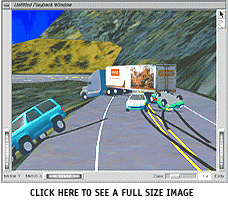
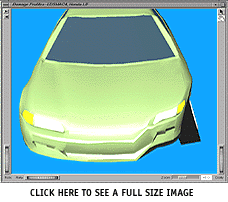
The above sequence used EDSMAC4 to simulate a crash involving 3 vehicles. The damage profiles are visualized directly from the EDSMAC4 simulation results. The green car's post-impact rollover and resulting body damage were simulated using EDVSM. EDVDS was used to simulate the braking and steering dynamics of the tractor-trailer in a downhill curve. One and a half miles of the crash site in the Columbia River Gorge were surveyed using a total station, edited using a 3-D CAD program, and imported into HVE. The vehicles' tires and bodies interact directly with the resulting surface mesh.
- HVE is a Visualization Tool — The human mind has difficulty interpreting the meaning of voluminous amounts of numerical data generated by a simulation. By comparison, the human mind easily comprehends vast amounts of visual data. Using HVE 3-D viewers, you can quickly and easily visualize the meaning of the information within HVE's numerical results.
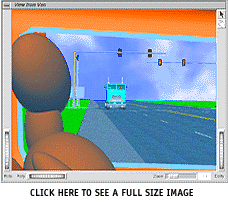
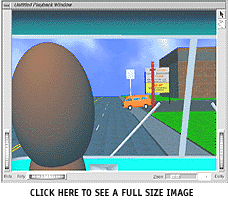
The above crash sequence was simulated using EDSMAC4. With no additional work, the cause of the crash was obvious by replaying the simulation with HVE's virtual camera attached to the witnesses and driver of each vehicle. HVE's 3-D viewers allow you to zoom, dolly, pan and even spin the entire world.
- HVE is an Integrated Solution — HVE saves you enormous amounts of time by integrating the 3-D simulation environment, animation controller, 3-D modeler and video codec interface into one system.
When you complete your simulation in HVE, you are ready to produce a movie file. This makes HVE a very cost-effective presentation tool for every simulation. Non-Integrated solutions often involve miscommunication, software compatibility problems and numerous iterations between the engineer and animator (such as keeping the tires in contact with a 3-D surface during the entire sequence).
- HVE is an Engineering Design Tool — Engineers can use HVE's robust human, vehicle and environment models to perform detailed parameter studies of individual components such as suspensions, drivetrains, tires and brakes. Vehicle handling behavior while driving over irregular terrain can be simulated to optimize your design. HVE provides a cost effective method for proving design concepts before expensive prototypes are produced.
In the simulation to the left, EDVDS was used to simulate an alternate ramp traversal test for studying suspension characteristics and frame torsional compliance. Other design applications include brake component and tire selection, and the general dynamic behavior of commercial vehicles pulling up to 3 trailers.
- HVE is a Safety Research Tool — Safety Researchers can use HVE's sophisticated modeling capability to simulate almost any crash sequence. The pre-crash phase can be simulated to evaluate vehicle controllability and driver inputs. The crash phase can be simulated to evaluate crashworthiness and effectiveness of restraint systems. The post-crash phase can be simulated to evaluate the effectiveness of guardrails and median barriers. HVE provides a cost-effective method for simulating crash tests before expensive experiments are conducted.
The GATB human simulation to the right involved four occupants in a passenger car. Not only did the occupants strike the vehicle interior, they also struck each other. The collision pulse for this occupant simulation was selected from the EDSMAC4 simulation of the two-car crash.
- HVE is Modular — HVE was engineered to allow you to extend its capabilities. You can choose a simulation model that is tailored to your specific needs, add custom databases, define your own units of measurement, select the number of decimal places in your input and output — you can even convert the program to French. You can use the HVE Developer's Toolkit to create HVE-compatible versions of any engineering model, including highly validated OEM engineering models used in the vehicle design process.
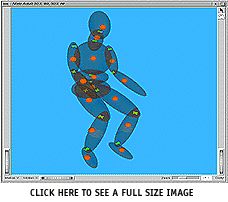
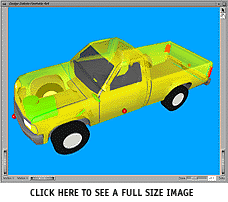
HVE's Human and Vehicle Editors allow you to select from a large assortment of fully defined 3-D human, vehicle and tire data sets in a standard hierarchical database. All properties may be edited using dialogs and viewers. Custom databases, such as EDVDB-3D, are also available containing data sets for specific vehicles (e.g. 1997 Ford Taurus 4-Dr sedan) and tires (e.g. Michelin P205/65R15 MXV4). Databases are user-extendable.

